Middleware in Node.js is a crucial concept that often confuses beginners but plays a vital role in building robust web applications.
Let's break it down into simple terms to understand what it is, why it's important, its types, and how it's applied.
What is Middleware?
Middleware serves as a connecting link among various components of your application. In the realm of Node.js, middleware functions possess the ability to interact with the request object (`req`), the response object (`res`), and the subsequent middleware function within the application's request-response sequence. This subsequent function is commonly referred to using a parameter named `next.
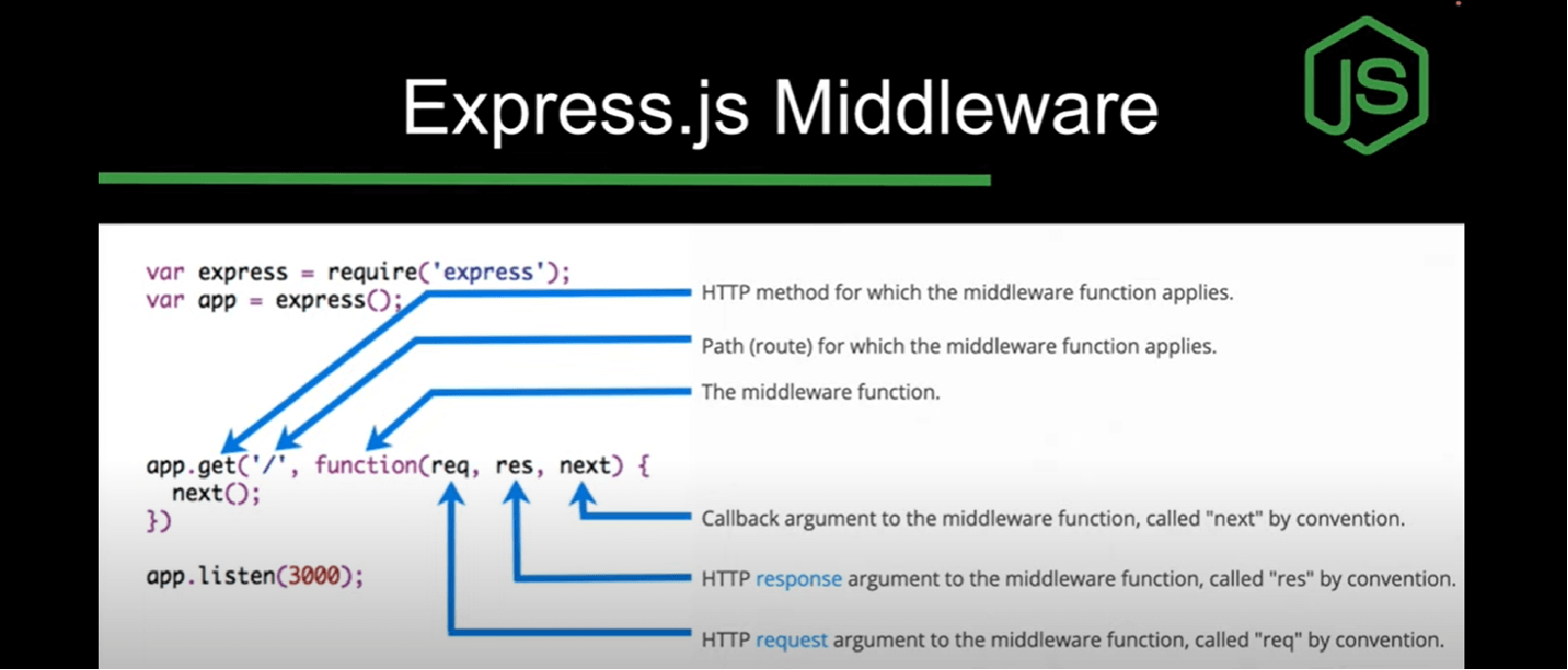
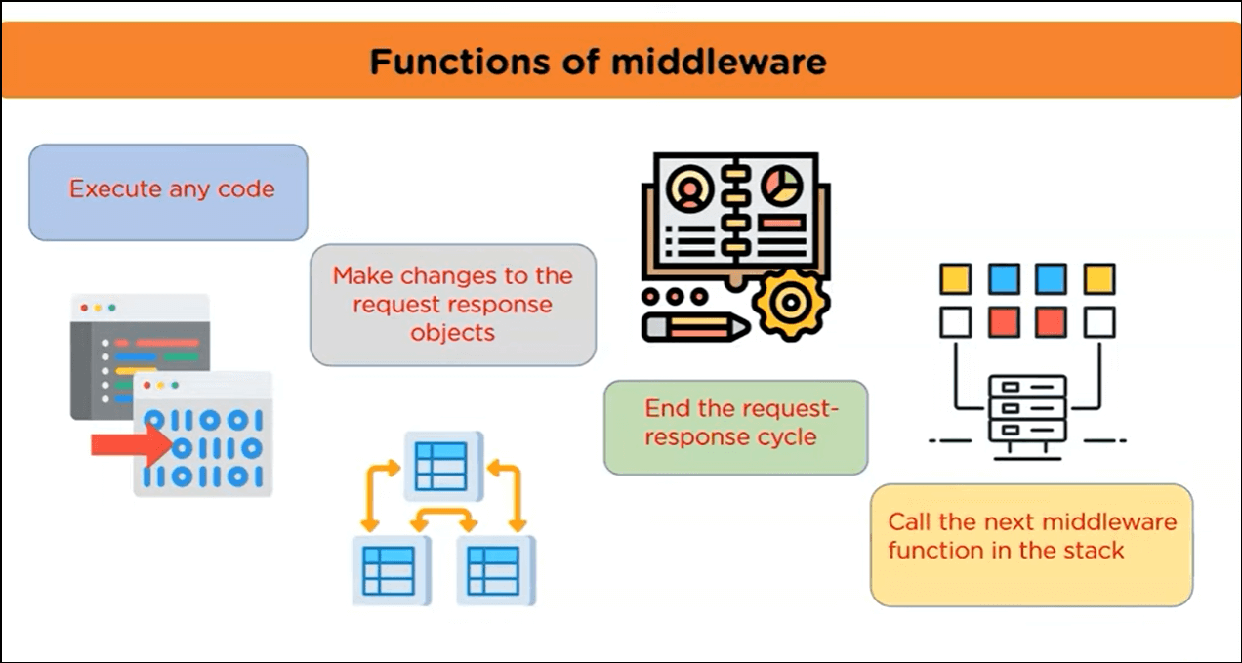
Why is Middleware Important?
Middleware allows you to execute code in a systematic way in your application's request-response cycle. This means you can perform various tasks such as logging, authentication, error handling, and more, without cluttering your main application logic. It promotes modularization and enhances maintainability.
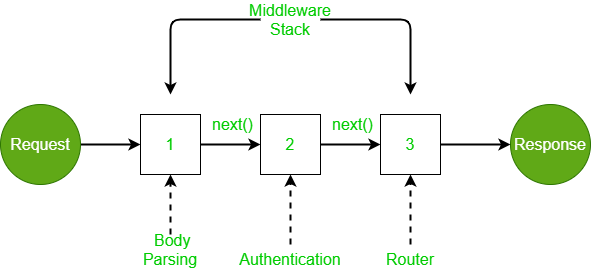
Types of Middleware:
Application-level Middleware: This middleware is bound to the entire application and is executed on every request. It's perfect for tasks like parsing incoming requests, authentication, logging, etc.
Router-level Middleware: Router-level middleware is bound to specific routes or groups of routes. It's useful for tasks that should only apply to certain parts of your application, like route-specific logging or authentication.
Error-handling Middleware: This middleware is specifically designed to catch errors that occur during request processing. It's essential for providing meaningful error responses to clients and preventing your server from crashing.
Third-party Middleware: These are middleware functions that are not built into Node.js but are provided by third-party packages. Examples include middleware for parsing request bodies, handling sessions, compression, etc.
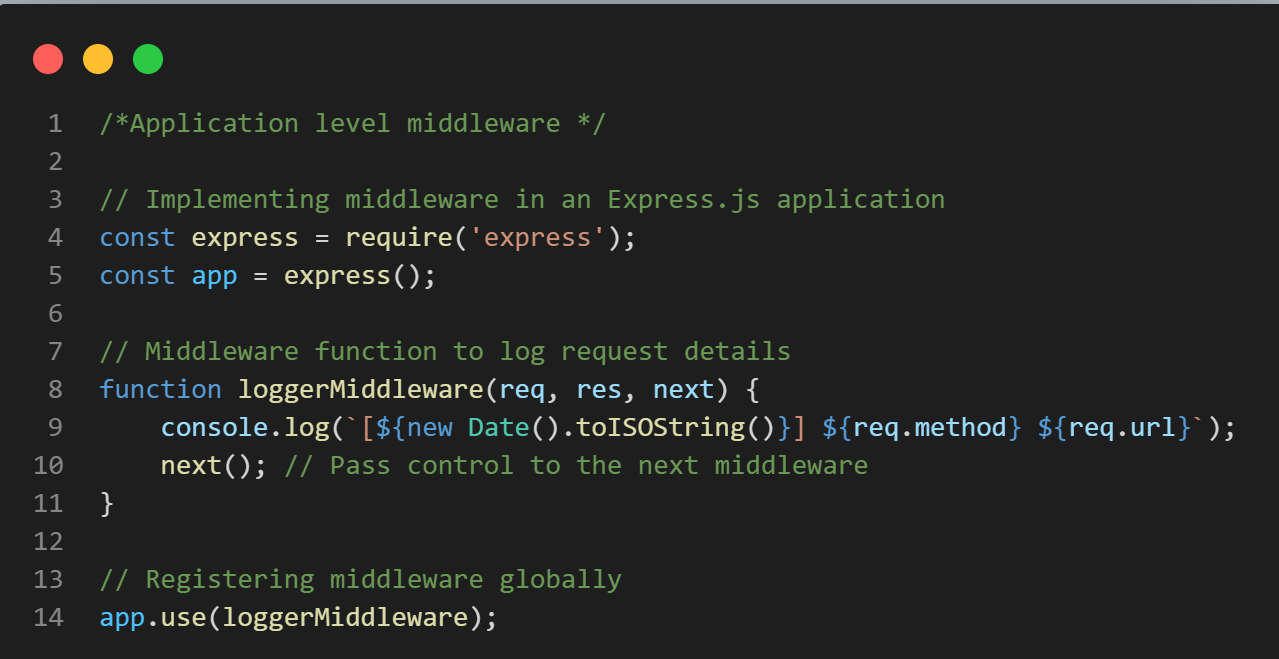
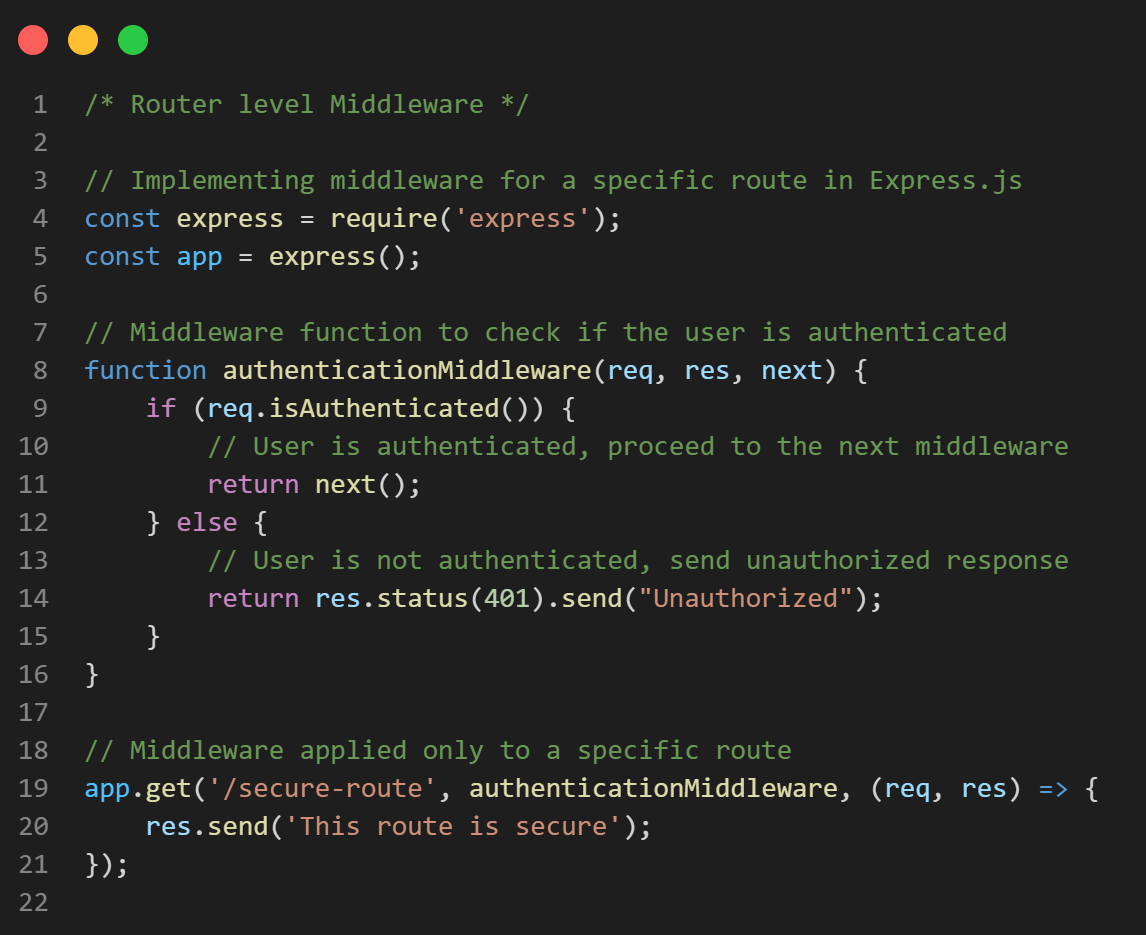
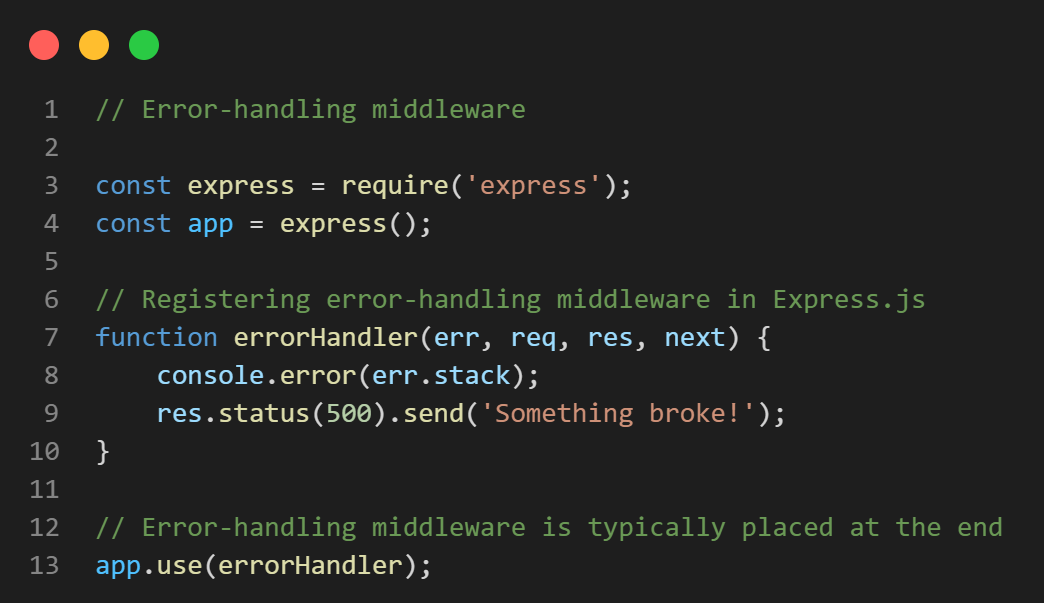
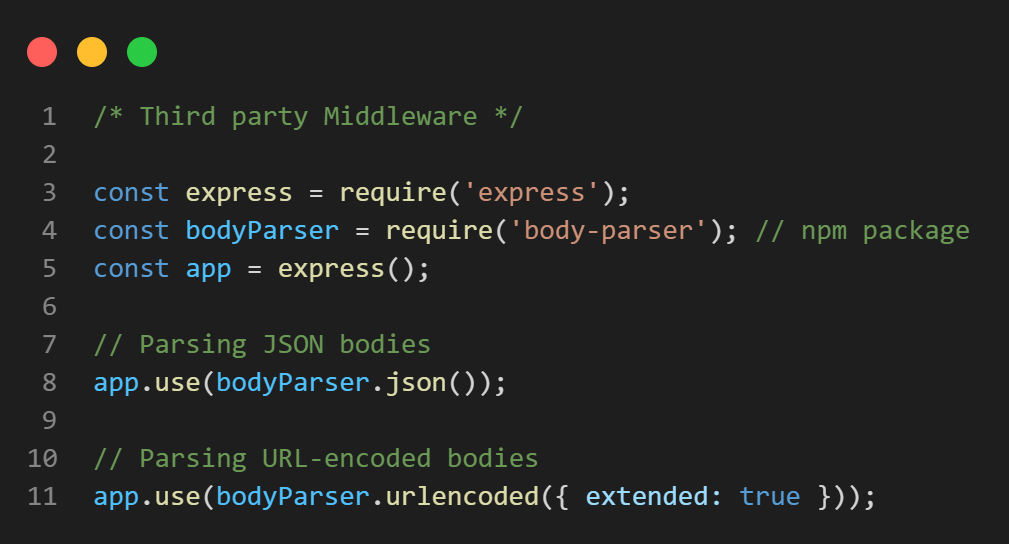
Middleware is a powerful tool in web development that can be applied to solve a variety of real-world problems. Here's how middleware can be used to address common challenges:
1. **Authentication and Authorization:**
Middleware can be used to authenticate users before granting access to certain routes or resources in a web application. For example, you can create authentication middleware that verifies user credentials against a database and sets up a session or issues a token upon successful authentication. Authorization middleware can then check whether the authenticated user has the necessary permissions to access a particular route or perform a specific action.
2. **Logging and Monitoring:**
Middleware can log information about incoming requests and outgoing responses, providing valuable insights into how the application is being used and helping to identify and troubleshoot issues. Logging middleware can record details such as request method, URL, headers, parameters, and timestamps, allowing developers to track performance metrics, monitor traffic patterns, and diagnose errors more effectively.
3. **Error Handling:**
Middleware can catch errors that occur during the processing of requests and send appropriate error responses to clients. Error-handling middleware can intercept exceptions, log error details, and generate user-friendly error messages or responses with relevant status codes. This helps to ensure a smoother and more robust user experience by gracefully handling errors and preventing crashes or unexpected behavior in the application.
4. **Request Parsing and Data Transformation:**
Middleware can parse incoming request bodies into a more usable format, such as JSON or URL-encoded data, and transform or sanitize the data as needed. For example, you can create middleware to parse JSON request bodies, validate input data, and sanitize user input to prevent security vulnerabilities like SQL injection or cross-site scripting (XSS) attacks. Middleware can also transform data before sending it back to clients in the desired format or structure.
5. **Caching and Performance Optimization:**
Middleware can implement caching mechanisms to store frequently accessed data or responses in memory or on disk, reducing the need to regenerate or fetch data from external sources for subsequent requests. Caching middleware can improve application performance, reduce latency, and alleviate load on backend servers by serving cached responses to clients whenever possible. This is particularly useful for serving static assets, API responses, or database query results that don't change frequently.
6. **Compression and Content Encoding:**
Middleware can compress outgoing responses using techniques like gzip or deflate to reduce bandwidth usage and improve page load times for clients. Compression middleware can automatically compress response bodies before sending them to clients who support compression, saving network resources and improving overall performance. Similarly, content encoding middleware can encode responses in different formats, such as JSON or XML, based on client preferences or content negotiation headers.
By leveraging middleware effectively, developers can address a wide range of real-world challenges in web development, from managing authentication and error handling to optimizing performance and enhancing security. Middleware provides a flexible and modular approach to building web applications, allowing developers to add and customize functionality as needed to meet the specific requirements of their projects.
Conclusion:
Middleware in Node.js is a powerful tool that simplifies request handling and promotes code modularity. By understanding its purpose, types, and applications, you can effectively leverage middleware to build scalable and maintainable web applications. Whether it's logging, authentication, error handling, or other tasks, middleware plays a crucial role in enhancing the functionality and robustness of your Node.js applications.
